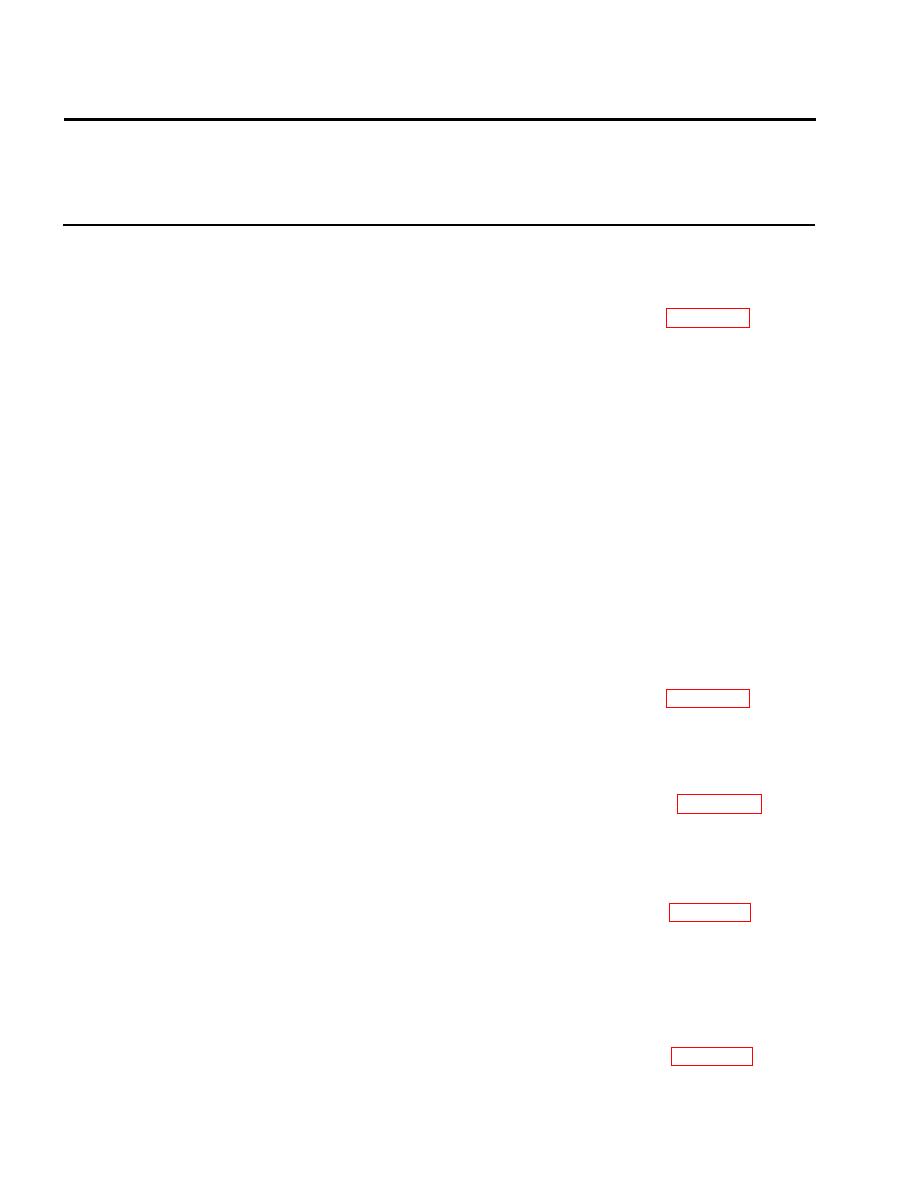 |
|||
|
|
|||
|
|
|||
| ||||||||||
|
|
 TM 9-2990-206-34&P
Troubleshooting
Table 2-1.
PROBLEM
PROBABLE CAUSE
CORRECTIVE ACTION
1. A lot of oil in the compressor housing air outlet.
Worn or damaged spacer rings.
Disassemble and repair turbosupercharger. Refer to page 3-1.
2. A lot of oil in the turbine housing exhaust inlets, with heavy oily soot
deposits on the turbine wheel.
Worn engine piston rings and/or bearings.
Continue the troubleshooting outlined below. If no other problems
are found, clean the turbosupercharger and return to the supply
system.
3. Heavy, oily soot deposits on the turbine wheel, with no oil in the turbine
housing exhaust inlets.
Worn or damaged seal ring.
NOTE
Heavy soot deposits are generally caused by excessive
engine idling or poor combustion.
Disassemble and repair turbosupercharger. Refer to page 3-1.
4.
Damaged or worn compressor wheel blades.
Foreign object striking blades or leaking engine induction system.
Disassemble and repair turbosupercharger. Refer to page 3-1.
Peened or feathered edges on compressor wheel or turbine wheel blade tips.
5.
Worn sleeve bearings.
Disassemble and repair turbosupercharger. Refer to page 3-1.
6.
Damaged compressor wheel or turbine wheel. Excessive dirt build-up in
compressor housing or turbine housing. Excessive carbon build-up
behind compressor wheel.
Disassemble and repair turbosupercharger. Refer to page 3-1.
2-2
|
|
Privacy Statement - Press Release - Copyright Information. - Contact Us |